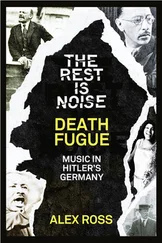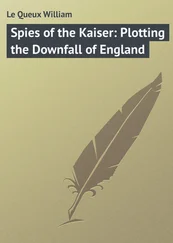4. Dorothee von Meding, Mit don Mut des Herzens Die Frauen des 20. Juli (Berlin, 1992), 244.
5. Ulrich von Hassell, Die Hassell-Tagebücher, 1938-1944: Aufzeichnungen vom anderen Deutschland, ed. Friedrich Hiller von Gaertingen, rev. and exp. ed. (Berlin, 1988), 211 (entry of Oct. 8, 1940).
6. Meding, Mut, 11.
7. Freya von Moltke, Michael Balfour, and Julian Frisby, Helmuth James von Moltke, 1907-1945: Anwalt der Zukunft (Stuttgart, 1975), 315.
8. Eberhard Zeller, Geist der Freiheit- Der zwanzigste Juli (Munich, 1963), 36.
9. Hoffmann, Widerstand, 524.
10. Dietrich Ehlers, Technik und Moral einer Verschwörung: Der 20. Juli 1944 (Frankfurt and Bonn, 1964), 123.
11. Erich Kordt, Nicht aus den Akten… Die Wilhelmstrasse in Frieden und Krieg: Erlebnisse, Begegnungen, und Eindrücke, 1928-1945 (Munich, 1949), 370.
12. Peter Bor, Gespräche mit Halder (Wiesbaden, 1950), 79.
13. Hassell was speaking of Walther von Brauchitsch (Hassell-Tagebücher, 54 [entry of Sept. 29, 1938]).
14. Hoffmann, Widerstand, 43. Despite the humiliation he suffered, Fritsch learned virtually nothing, as can be seen in a letter he wrote on December 11, 1938, ten months after his dismissal. He says that after the First World War he realized that Germany would have to fight “three victorious battles” in order to become powerful again: one against the working class-as Hitler, he added, had already largely done-one against the Catholic Church, and one against the Jews. “We are still in the midst of these struggles,” he continued. “And the struggle against the Jews is the hardest.” See Nicholas Reynolds, “Der Fritsch-Brief vom 11. Dezember 1938,” Vierteljahrshefte fur Zeitgeschichte (1980), 358ff.
15. Adolf Heusinger, Befehl im Widerstreit (Tübingen and Stuttgart, 1950), 367. For Reichenau and Hammerstein, see Hildegard von Kotze, ed. Heeresadjutant bei Hitler, 1938-1943: Aufzeichnungen des Majors Engel (Stuttgart, 1974), 107 (entry of May 23, 1941).
16. Helmut Krausnick, “Stationen des nationalsozialistischen Herrschaftssystems,” Stationen der deutschen Geschichte, 1919-1943, ed. Burghard Freudenfeld (Stuttgart, 1962), 135-36. See also Archiv Peter, ed., Spiegelbild einer Verschwörung: Die Kaltenbrunner-Berichte über das Attentat vom 20. Juli 1944 (Stuttgart, 1961), 281ff.
17. Ehlers, Technik, 120.
18. Christian Müller, Oberst i.G. Stauffenberg: Eine Biographie (Dusseldorf, 1970), 462.
19. Bor, Gespräche, 125; see also Hoffmann, Widerstand, 185.
20. Ehlers, Technik, 66.
21. Count Rudolph-Christoph von Gersdorff, Soldat im Untergang: Lebensbilder (Frankfurt and Berlin, 1979), 176-77. For Erich Marcks, see Hans Rothfels, Deutsche Opposition gegen Hitler: Eine Würdigung, exp. ed. (Tübingen, 1969), 92.
22. Hans Mommsen, “Der Widerstand gegen Hitler und die deutsche Gesellschaft,” Schmädecke and Steinbach, Widerstand, 14. See Mommsen for suggested further reading as well.
23. Rothfels, Opposition, 165.
24. Hermann Graml, “Die deutsche Militäropposition vom Sommer 1940 bis /um Frühjahr 1943,” Die Vollmacht des Gewissens (Berlin and Frankfurt), vol. 2, 509-10.
25. Schlabrendorff, Offiziere, 65. For Moltke’s letter, see Richard Lamb, The Ghosts of Peace, 1935-1945 (London, 1987), 262.
26. Probably the first to do so was Gerhard Ritter, in Carl Goerdeler und die deutsche Widerstandsbewegung (Stuttgart, 1984), 13.
27. Marion Yorck von Wartenburg, Die Stärke der Stille: Erzählungen eines Lebens aus dem deutschen Widerstand (Cologne, 1984), 70.
28. Spiegelbild, 34.
29. Manfred Messerschmidt, “Militärische Motive zur Durchführung des Umsturzes,” Schmädecke and Steinbach, Widerstand, 1034.
30. Rüdiger Altmann, Der wilde Frieden: Notizen zu einer politischen Theorie des Scheiterns (Stuttgart, 1987), 200.
31. Zeller, Freiheit, 531.
32. Alexander Stahlberg, Die verdammte Pflicht: Erinnerungen, 1932-1945 (Berlin and Frankfurt, 1994), 456ff.
33. Rothfels, Opposition, 87.
34. Karl Otmar von Aretin, cited in Ulrich Cartarius, Opposition gegen Hitler (Berlin, 1984), 26.
35. Kunrat von Hammerstein, Spähtrupp (Stuttgart, 1963), 295.
36. Meding, Mut, 52. Stauffenberg’s widow, Countess Nina Schenk von Stauffenberg, said something similar: “On the whole, what happened was probably best for the cause” (288).
The following works cited in their German editions in the notes are available in English translation.
Balfour, Michael, and Julian Frisby. Helmuth von Moltke: A Leader against Hitler.
London, 1972.
Bracher, Karl Dietrich. The German Dictatorship: The Origins, Structure, and Effects
of National Socialism. New York, 1970.
Buchheim, Hans, et al. Anatomy of the SS State. Trans. Richard Barry, Marian
Jackson, and Dorothy Lang. New York, 1968.
Ciano, Galeazzo. The Ciano Diaries, 1939-1943. Ed. Hugh Gibson. New York, 1947.
Domains, Max. Hitler: Speeches and Proclamations, 1932-1945. London, 1990.
Fest, Joachim, Hitler. Trans. Richard and Clara Winston. New York, 1973.
--------. The Face of the Third Reich. Trans. Michael Bullock. New York, 1970.
Francois-Poncet, Andre. The Fateful Years: Memoirs of a French Ambassador in
Berlin, 1931-1938. New York, 1949.
Gisevius, Hans Bernd. To the Bitter End Trans. Richard and Clara Winston. Boston,
1947.
Halder, Franz. The Halder War Diary, 1939-1942. Ed. Charles Burdick and Hans-
Adolf Jacobsen. Novato, 1988.
Hassell, Ulrich von. The von Hassell Diaries: The Story of the Forces against Hitler
inside Germany, 1938-1944 Boulder, 1944.
Hoffmann, Peter. German Resistance to Hitler. Cambridge, Mass., 1988.
--------. Hitler’s Personal Security. Cambridge, Mass, 1979.
Höhne, Heinz. Canaris: A Biography of Hitler’s Chief of Espionage Trans. J.
Maxwell Brownjohn. New York, 1979.
Kramarz, Joachim. Stauffenberg: The Architect of the Famous July 20 thConspiracy to
Assassinate Hitler. Trans. R. H. Barry. New York, 1967.
Moltke, Helmuth James von. Letters to Freya, 1939-1945. Ed. and trans. Beate Ruhm
von Oppen. New York, 1990.
Rothfels, Hans. The German Opposition to Hitler: An appraisal. Chicago, 1962.
Schlabrendorff, Fabian von. Revolt against Hitler. New York, 1982
Schöllgen, Gregor. A Conservative against Hiller: Ulrich von Hassell, Diplomat in
Imperial Germany, the Weimar Republic, and the Third Reich, 1881-1944 Trans. Louise Willmot. New York, 1991.
Speidel, Hans. Invasion 1944: Rommel and the Normandy Campaign. Chicago, 1950.
Stahlberg, Alexander. Bounden Duty. The Memoirs of a German Officer, 1932-1945
Trans. Patricia Crampton. New York, 1990.
Steinert, Marlis G. Hitler’s War and the Germans: Public Mood and Attitude during
the Second World War. Ed. and trans. Thomas E. J de Witt Athens, Ohio, 1977.
Stern, Fritz. Dreams and Delusions: The Drama of German History. New York, 1987.
Trial of Major War Criminals before the International Military Tribunal 42 vols.
Nuremberg, 1947-49.
van Roon, Ger. German Resistance to Hitler Count von Moltke and the Kreisau
Читать дальше
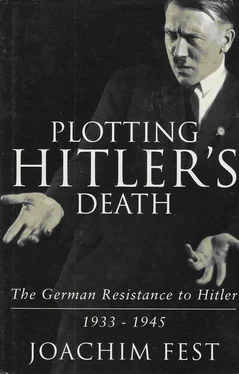
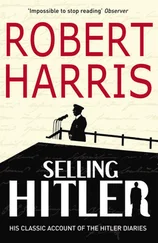
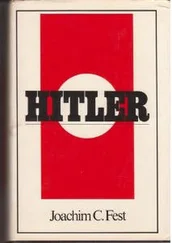
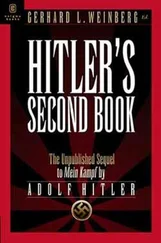
![Traudl Junge - Hitler's Last Secretary - A Firsthand Account of Life with Hitler [aka Until the Final Hour]](/books/416681/traudl-junge-hitler-s-last-secretary-a-firsthand-thumb.webp)





